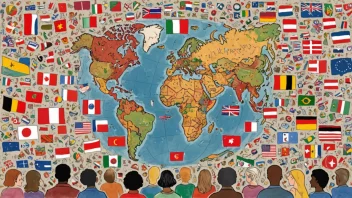The intricate relationship between public opinion and policy decisions is a cornerstone of democracy and governance. Understanding how public sentiment influences the policymaking process reveals much about the dynamics of power, representation, and accountability in society. Policymakers often act as conduits for the voices of their constituents, shaping legislation and public policy in response to the needs and desires of the electorate.
Public opinion can be defined as the collective attitudes and beliefs of individuals on various issues, ranging from healthcare reform to immigration policy. This collective sentiment is crucial for democratic governance, as it ensures that elected officials remain responsive to the people they serve. Polls, surveys, and focus groups are common tools used to gauge public opinion, allowing policymakers to understand what issues matter most to their constituents.
One of the most significant ways public opinion influences policy is through electoral pressure. Politicians seeking reelection are keenly aware of their constituents' preferences and are likely to align their policy positions with the prevailing public sentiment. For instance, if a significant portion of the electorate expresses concern about climate change, politicians may prioritize environmental legislation to secure votes. This dynamic creates an accountability loop, where public opinion directly impacts the actions of elected officials.
The role of media in shaping public opinion cannot be overstated. Traditional news outlets, social media platforms, and digital forums contribute to the dissemination of information, framing public discourse on critical issues. When certain topics gain traction in the media, they can generate widespread public interest and urgency. For example, the COVID-19 pandemic highlighted the importance of public health, leading to a surge in support for government intervention and funding for healthcare initiatives.
Additionally, grassroots movements and advocacy groups play a pivotal role in influencing public opinion and, subsequently, policy decisions. Organized campaigns can mobilize public sentiment, encouraging civic engagement and activism on pressing issues. The impact of movements such as the Women’s March or the Climate Strikes exemplifies how collective action can sway public opinion, prompting lawmakers to take action in response.
While public opinion is a powerful force, it is essential to acknowledge its complexities. Not all public sentiments are informed or reflective of the broader population's interests. Misinformation and polarization can distort public perceptions, leading to policy decisions that may not align with factual realities. Therefore, it is crucial for policymakers to engage in open dialogue, promote transparency, and provide accurate information to ensure that public sentiment is well-informed.
In summary, public opinion is a fundamental driver of policy decisions in democratic governance. The interplay between public sentiment, media influence, and grassroots activism shapes the policymaking landscape, ensuring that elected officials remain accountable to their constituents. As society continues to evolve, understanding the nuances of this relationship will be vital for fostering effective governance and creating policies that truly reflect the will of the people.
Public Sentiment: The Backbone of Policy Making
Exploring the intricate relationship between public sentiment and policy decisions reveals the dynamics of democracy and governance.






